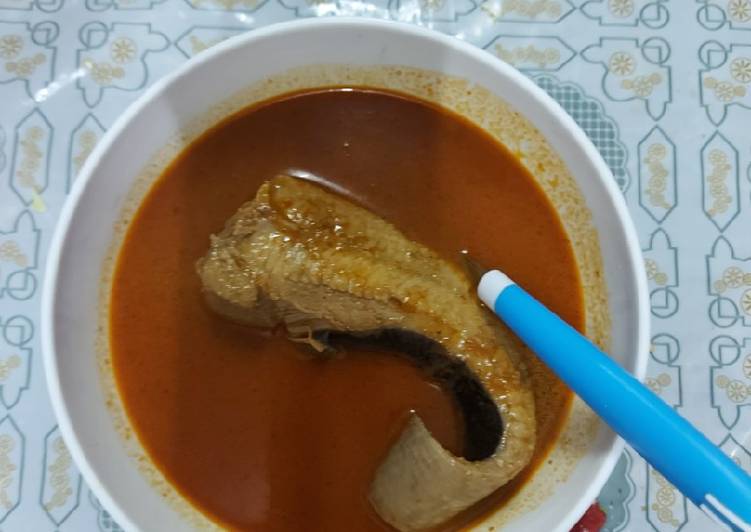Asam Pedas Mak. Hari ni Mak Engku masak ikan cencaru masak asam pedas dengan terung.selamat menjamu selera. Assam Pedas, or literally "sour spicy," is a classic Malaysian dish. Ask any home cooks in Malaysia-Malay, Chinese, or Indian-and you are bound to get various recipes for Assam Pedas.
 The picture below shows the ingredients to make the curry paste.
Please refer to the recipe for the quantity that I used.
If you make a bigger batch of the blended paste, it can be refrigerated for about a week and longer in the freezer.
Kamu bisa memasak Asam Pedas Mak menggunakan bahan-bahan 9 dan langkah-langkah 4. Berikut cara membuatnya.
The picture below shows the ingredients to make the curry paste.
Please refer to the recipe for the quantity that I used.
If you make a bigger batch of the blended paste, it can be refrigerated for about a week and longer in the freezer.
Kamu bisa memasak Asam Pedas Mak menggunakan bahan-bahan 9 dan langkah-langkah 4. Berikut cara membuatnya.
Bahan-bahan Asam Pedas Mak
- Ikan/ayam/daging .
- Bawang merah dihiris .
- Bawang putih dihiris .
- Garam .
- Bahan perasa .
- Gula .
- Asam jawa .
- Bahan A .
- Cili kering + bawang merah + bawang putih = kisar .
So, anytime when you have a craving for Asam Pedas, you have your paste ready to fry. Asam Pedas Resepi Asam Pedas Turun Temurun. Ikan parang paling digemari orang Batu Pahat, selain Ikan Merah. ASAM PEDAS MAK KIAH KINI BERADA DI RESTORAN BISIK BISIK RESEPI BONDA ASAM PEDAS TRADISI JOHOR IKAN SEGAR MENJADI KEUTAMAAN ASAM.
Langkah-langkah Asam Pedas Mak
- Tumis bahan A dengan bawang merah dan bawang putih yang dihiris sehingga masak..
- Masukkan gula, garam dan bahan perasa secukup rasa dan gaul sebati..
- Masukkan air asam jawa dan dan gaul. Sekiranya mahu pekat kurangkan air or lebihkan lada..
- Masukkan ikan/ayam/daging, biarkan mendidih dan masak. Adjust rasa mengikut keperluan...
ASAM PEDAS MAK KIAH KINI BERADA DI RESTORAN BISIK BISIK RESEPI BONDA ASAM PEDAS TRADISI JOHOR IKAN SEGAR. Asam Pedas "sour spicy," Fish is a classic Malay dish cooked in tamarind (asam) fruit juice. Asam Pedas is popular in Singapore and Malaysia and everyone has their own interpretation for this favorite dish. Various vegetables such as brinjals (Indian eggplants), okra and tomatoes are added to the Asam Pedas. Asam Pedas is a wonderfully simple name, the two words meaning just 'sour,' and 'spicy.' The sourness traditionally comes from sour tamarind (boiled until soft, and then squeezed to make juice), and spicy, of course, the from use of fresh chili peppers.